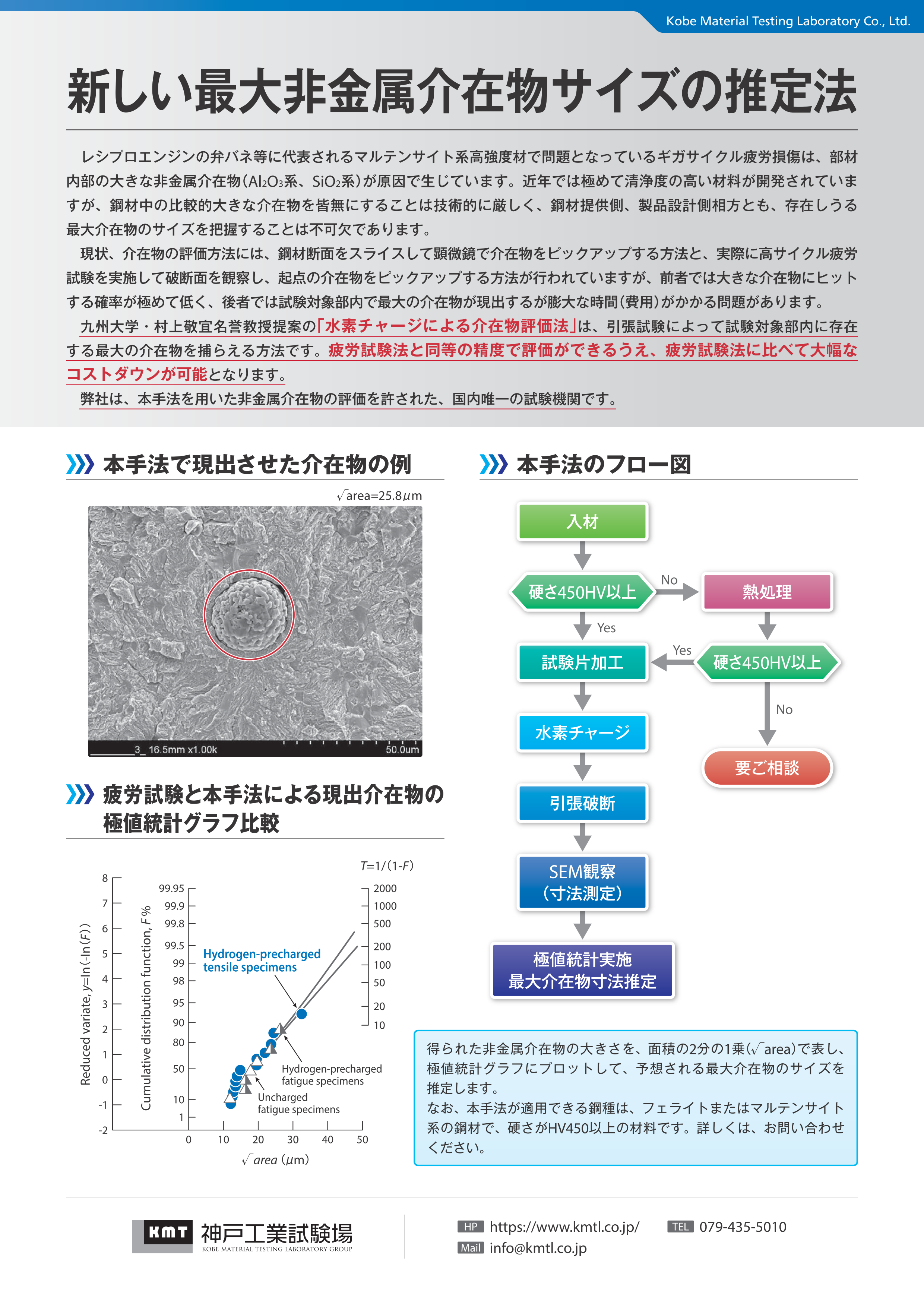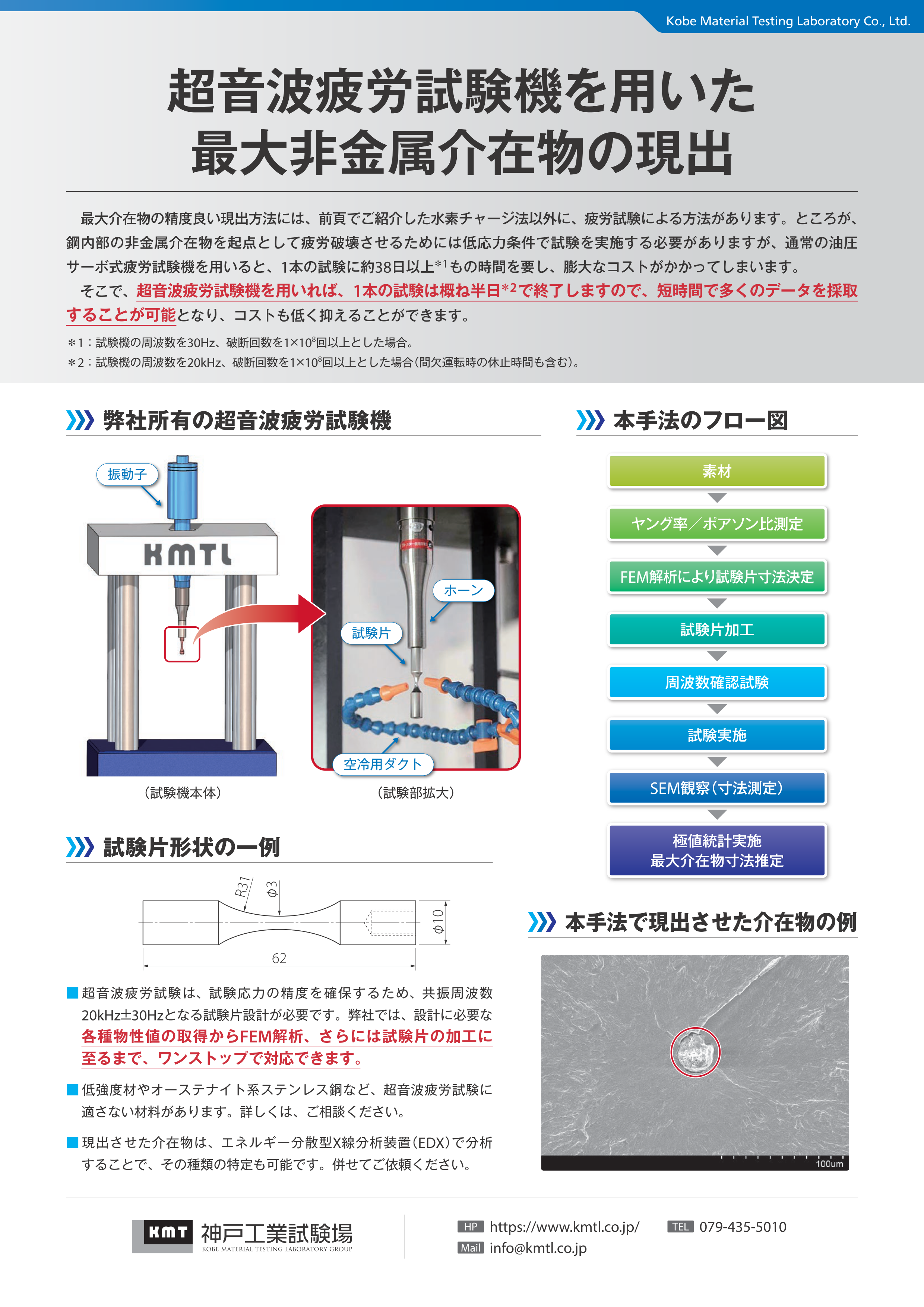-
Test Service

-
Analysis Service

-
Accreditations/Approvals

- First time visitors
-
- Contact Contact
- JAPANESE
NEWS
NEW TECH
NEWS
NEW TECH
Category
Archive by year
NEW TECH
New method of estimating maximum size of non-metallic inclusions
We are pleased to introduce our new leaflet on a new method of estimating the maximum size of non-metallic inclusions.
Giga-cycle fatigue damage is a major concern in martensitic high-strength materials such as valve springs in reciprocating engines. The damage is caused by large non-metallic (Al203 or SiO2 based) inclusions inside the material. Although extremely high-purity materials have been developed recently, it remains technically challenging to eliminate relatively large inclusions in steel. Therefore, it is crucial for both steel providers and product designers to determine the maximum size of inclusions that can be present in the material.
Currently, two common methods are used to evaluate inclusions: slicing the steel cross section to detect them under a microscope, and conducting high-cycle fatigue testing to observe the fracture surface and identify inclusions at the fatigue origin. However, the former method has a very low probability of detecting large inclusions, while the latter reveals the largest inclusion present in the test section but is time-consuming and costly.
The inclusion rating method by using hydrogen charge, proposed by Dr. Yukitaka Murakami, Professor Emeritus at Kyushu University, uses tensile testing to determine the maximum inclusion size in the test section. This method can provide the same accuracy as the fatigue test method but at a significantly lower cost.
We are the only testing laboratory in Japan authorized to use this method to evaluate non-metallic inclusions.
* Click to enlarge * Unauthorized reproduction strictly prohibited.
| The front of our leaflet | Back of our leaflet |
 |
 |
In addition to the above hydrogen-charge method, fatigue testing is also a method for accurately detecting the maximum inclusion size. However, in order to induce fatigue fracture starting from the non-metallic inclusions in the steel, the test needs to be conducted under low-stress conditions. If a conventional hydraulic servo fatigue testing machine is used, a single test can take over 38 days*1 and incur significant costs.
Using an ultrasonic fatigue testing machine, a single test can be completed in approximately half a day*2, enabling the collection of a large amount of data in a short period time at a reduced cost.
*1: When the testing machine frequency is 30 Hz and failure cycles are over 1 x 108
*2: When the testing machine frequency is 20 kHz and failure cycles are over 1 x 108 (including pause time during intermittent operation)
Regarding inquiries
For inquiries related to this matter, please contact us here.





